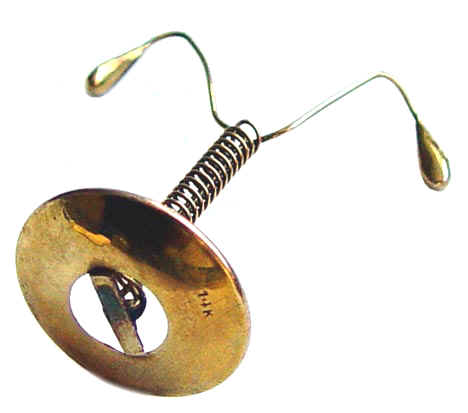I'd just let this go, but Charles presents a few great examples.
And sorry Charles, but your link says it all. The craftsmanship on
that piece is of average, routine quality and far, far away from
what would be called fine jewelry, if it were jewelry. Posting that
link says, "I don't get it" more than anything. Sorry....... Give
that design to me and I'll make it sit up and sing, and walk your
dog for you, to boot.
I was fitting it into context with the previous post, which outlined
that :-
“Fine jewelry is determined by inspection. Fine jewelry is defined
as perfection by a trained eye under 10x magnification. That includes
polish and finish and craftsmanship such as that circles are round
and squares are square and centered things are on-center. This is
very good point and i would like to see materials listed here as well
at the very least 14kt gold alloy, if its going to be a white gold
alloy it should be palladium white to be considered fine & platinum
maybe palladium”.
It was also a joke 
And if ever I needed an IUD out of 14k, I’ll get you to make me one

Charles especially, and some other postings, are essentially
speaking from a consumer point of view. Again: the entire field of
goldsmithing is not populated by bumbling idiots.
This is absolutely true, because the market drives the direction of
the industry, and I’m assuming most of us are working jewellers or
striving to be. The customers tell us what to make, or set the trends
that influence what we make.
I definitely know we’re not bumbling idiots (and I’ve never said
that we were), and I wouldn’t be wasting my time on this list talking
to idiots, everyone here is intelligent, even though our views may
clash.
However everyone I speak to has a different opinion on what the term
“fine jewellery” is. It doesn’t matter how long they’ve been in the
industry, they’re all different. This makes it an opinion.
Would I take your opinion, over mine as to what “fine jewellery” is?
“Yes”… to a point. When and if my work skills exceed yours, then
my “own” definition of what “fine jewellery” is would take
precedence.
But that’s just my opinion 
…
One person described “fine jewellery” to me as a well made piece of
jewellery, with hidden elements that only the wearer and jeweller
knows about, a piece that looks just as good standing on the dresser
as well as being worn. There was no mention of the materials, it was
more about the design… the jeweller was a designer.
Another mentioned that “fine jewellery” could be a perfectly
flawless wedding band, his implication was precious metals, although
he didn’t mention this as a factor. He’s a master jeweller, of many
years standing.
If this discussion is any gauge, we will “never” come to a consensus
of what fine jewellery is. It will always be someone elses opinion
over another.
Regards Charles A.


 It’s a major faux pas. Barbara, at the beginning of the
It’s a major faux pas. Barbara, at the beginning of the